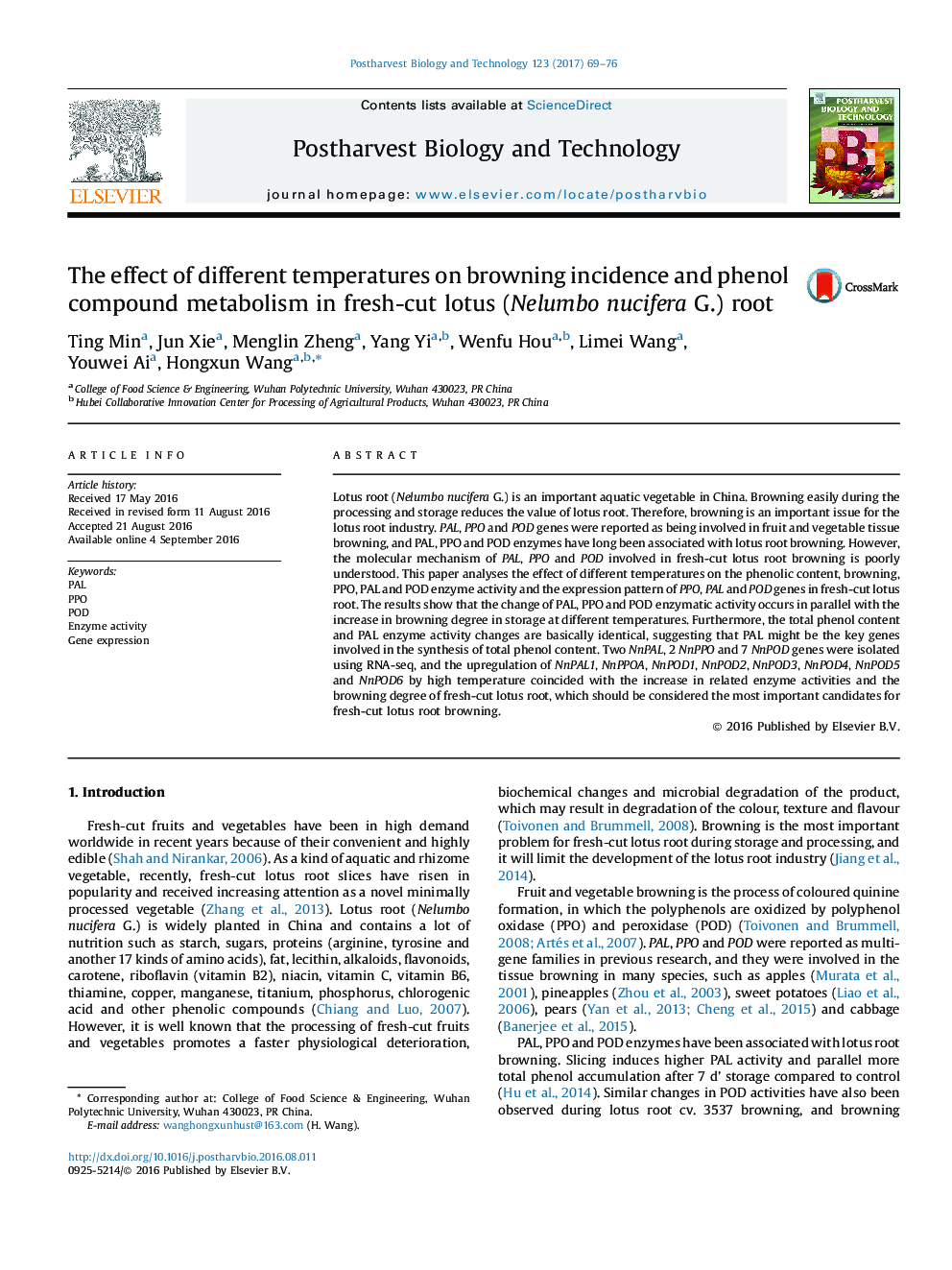| کد مقاله | کد نشریه | سال انتشار | مقاله انگلیسی | نسخه تمام متن |
|---|---|---|---|---|
| 4517673 | 1624971 | 2017 | 8 صفحه PDF | دانلود رایگان |
• The higher the temperature, the more serious the browning in fresh-cut lotus root.
• NnPAL1, NnPPOA and NnPOD1-6 were induced by high temperature during storage.
• NnPAL1, NnPPOA and NnPOD1-6 could be the candidate genes for lotus root browning.
Lotus root (Nelumbo nucifera G.) is an important aquatic vegetable in China. Browning easily during the processing and storage reduces the value of lotus root. Therefore, browning is an important issue for the lotus root industry. PAL, PPO and POD genes were reported as being involved in fruit and vegetable tissue browning, and PAL, PPO and POD enzymes have long been associated with lotus root browning. However, the molecular mechanism of PAL, PPO and POD involved in fresh-cut lotus root browning is poorly understood. This paper analyses the effect of different temperatures on the phenolic content, browning, PPO, PAL and POD enzyme activity and the expression pattern of PPO, PAL and POD genes in fresh-cut lotus root. The results show that the change of PAL, PPO and POD enzymatic activity occurs in parallel with the increase in browning degree in storage at different temperatures. Furthermore, the total phenol content and PAL enzyme activity changes are basically identical, suggesting that PAL might be the key genes involved in the synthesis of total phenol content. Two NnPAL, 2 NnPPO and 7 NnPOD genes were isolated using RNA-seq, and the upregulation of NnPAL1, NnPPOA, NnPOD1, NnPOD2, NnPOD3, NnPOD4, NnPOD5 and NnPOD6 by high temperature coincided with the increase in related enzyme activities and the browning degree of fresh-cut lotus root, which should be considered the most important candidates for fresh-cut lotus root browning.
Journal: Postharvest Biology and Technology - Volume 123, January 2017, Pages 69–76
